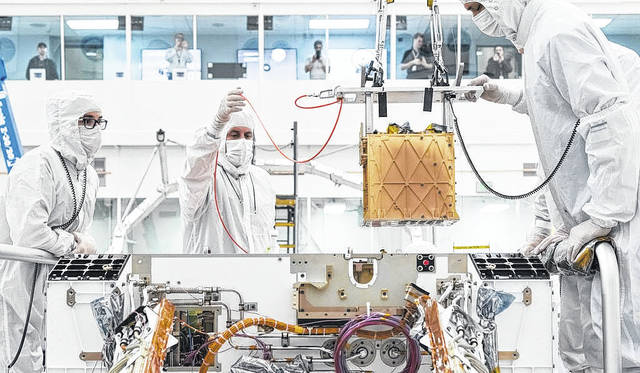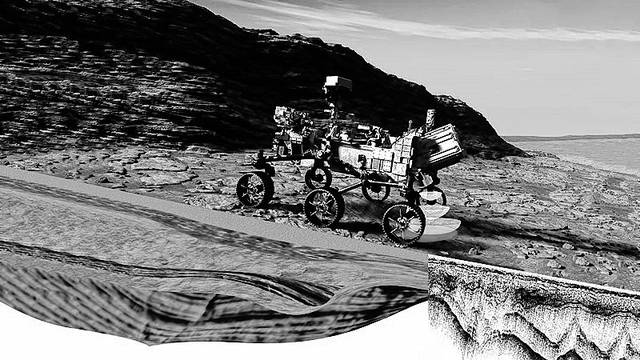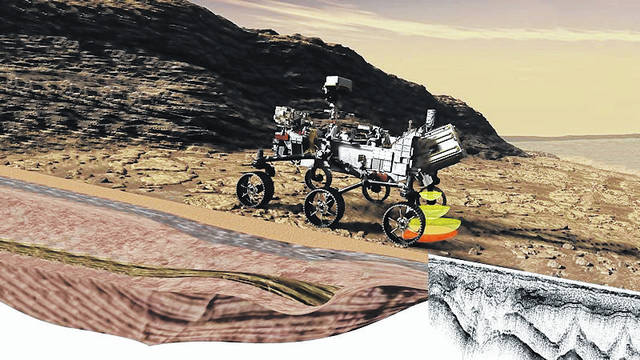
MEDA and Moxie are two instruments that are paving the way for future human exploration of Mars.
Courtesy photo
Perseverance is NASA’s latest robot to explore Mars. Hopefully, Perseverance landed gently on the lakebed floor of Jezero crater at 3:55 p.m. EST on Thursday.
To quantify the differences, let’s begin by talking about the entry, descent and landing of this rover. Much more precise than the landing system on Curiosity, Perseverance features a number of innovations. Range trigger is a software that enhanced parachute opening, bringing Perseverance closer to its ideal landing site. Terrain relative navigation used the rover’s downlook camera to snap images of the surface, and quickly compare them to previously assembled orbital images of the same terrain using the onboard computer. The rover could then fire its retrorockets in order to steer clear of landing hazards, similar to when Neil Armstrong steered clear of a boulder field Eagle was headed for on the moon.
Once safely on the ground, the rover’s instruments begin to interrogate Mars as never before.
The chemin instrument is a laser that will pierce the surface of selected rocks, while an x-ray spectrometer looks at the resulting vapor. In this way, rocks can be analyzed up to 30 feet away.
Sherloc, Watson and PIXL are three spectrometers located on the end of the robotic arm. They use different wavelengths of light to analyze the mineral composition of rocks, and determine if organic matter is present.
Two microphones on the rover will document the sounds of landing on and exploring Mars. These microphones documented the sound of entry, descent and landing and the day-to-day grind of exploration. Wheel and motor function can be analyzed by the pitch of the motors. When the laser or drill is interrogating a sample, the noise that rock makes while being drilled or blasted can tell you a lot about the interior structure of the rock, as well as the resistance of its surface.
Rimfax is a ground-penetrating radar that can “see” 200 feet down. This will help determine the subsurface structure of the rocks and find out if there is ice or liquid water under the rover.
MEDA and Moxie are two instruments that are paving the way for future human exploration of Mars. MEDA is a weather station that will, in addition to gathering basic weather information, gather information about Martian dust grains. This information will enhance the design of shielding on future human habitats. Moxie is designed to take carbon dioxide out of the Martian atmosphere, and convert it to oxygen. Of course Mars colonists will need oxygen to breathe, but oxygen is also useful as rocket fuel. Moxie is one example of a technology test of equipment that will enable In-situ resource utilization — using Mars materials to assist colonists.
Another technology demonstration test is the Mars helicopter, Ingenuity. Ingenuity is a 4-pound, simple design machine that includes a camera, radio, computer, and — of course — rotors and the motors to power them. Solar powered, it will be launched on five test missions shortly after Perseverance lands.
All together, these instruments and equipment should provide plenty of data, along with some cool visuals and audio from Mars. I can’t wait to see how this mission unfolds!
To follow along, go to https://mars.nasa.gov/mars2020/. There, new images, video, audio and mission updates will be posted daily.
Ken Brandt is the director of the Robeson Inflatable Planetarium. The planetarium is located at JC Hargrave Elementary school’s cafeteria in downtown Lumberton while awaiting a rebuild after the flooding caused by hurricanes Matthew and Florence. If you are interested in helping the rebuilding effort, email Brandt at [email protected]. For more information about the Robeson Planetarium and Science Center visit https://www.robeson.k12.nc.us/o/robeson/page/robeson-planetarium.









